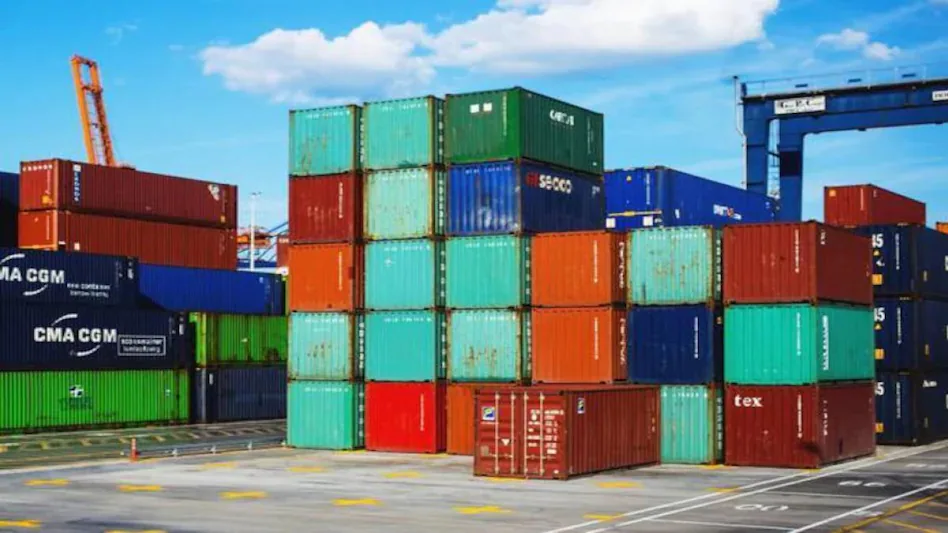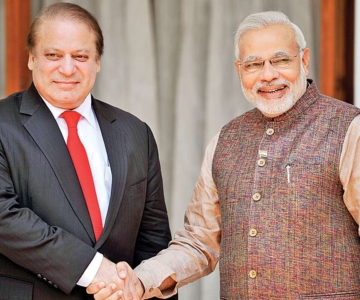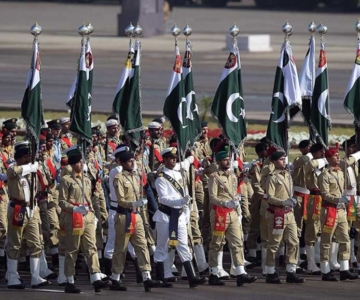China and Taiwan are sworn enemies. In 2009, the total volume of their trade was 110 billion dollars. India’s trade is expanding with China, and the current volume is nearly 60 billion dollars per annum. On the other hand, the total volume of formal trade between India and Pakistan is around a billion dollars. What does this say about keeping rational economic interest over emotional narratives of nationalism and politics? The politics and troubled past has ruined South Asia’s present and potentially its future. It is time to review the situation and reverse this trend.
True, we have unresolved issues with India. It is also well-known that India has not respected the United Nations resolutions on Kashmir. But our mercurial rulers have not been consistent in their stance either. The last of our long list of dictators, General Musharraf announced his willingness to forego our conventional position on Kashmir. However, due to various factors he could not translate his statements into action. The Indian side also displayed its lack of foresight in engaging further with Musharraf and preferred pandering to the shrill hate-and-crush-Pakistan domestic lobbies.
This is why granting of Most Favoured Nation (MFN) status is more of a political and national security issue than a clear cut economic choice that a sensible country makes while choosing its development trajectory. Trade between India and Pakistan is a joke compared to trade between India and its other global partners. There is a consensus that India-Pakistan trade is a win-win situation for the two countries only if the Indian and Pakistani states were to find a mechanism where effective dialogue takes place and the politics of bickering gives way to a rational discourse.
The SAARC member countries including Pakistan and India concluded the South Asian Free Trade Area (SAFTA) treaty in 2004 which allowed for freer trade and aimed to reduce trade barriers and tariffs in two phases. The World Bank studies also estimated that both Pakistan and India by entering into a preferential trade system like SAFTA were likely to gain. But the conflict and political differences have prevented from this to happen. Despite the limits trade has been increasing due to sheer necessity.
For centuries trade has taken place in the region. Today the routes between the two Punjab[s], between Karachi and Mumbai and from Rajasthan and Gujarat into rural Sindh are still valid. Asad Sayeed, a reputed economist based in Karachi states that if normal trade resumes, regional economic benefits that can accrue on either side will have a multiplier effect. In fact informal trade that takes place is unknown but quite significant. Yasir Khan writing for The News (July 10, 2010) also highlighted the World Bank estimates of 2002 whereby Indo-Pak trade could expand Pakistan’s Gross National Product by 1.8%. Khan also quoted a study by Peterson Institute of International Economics which estimated informal trade between two countries in the range of $3 billion per annum. The potential therefore is immense.
India will also gain as Pakistan will provide a viable land route for its trade with Central Asia. Most importantly, given India’s energy deficits, normal trade will meet its energy demands and Pakistan can make impressive gains in foreign revenues through rents. It has already been estimated some years ago by the State Bank of Pakistan that the proposed gas pipeline to India could make us earn upto 700 millions dollars per annum.
The exaggerated fears of Indian domination are now a matter of history. Pakistan is already a dumping ground for Chinese goods. Uncompetitive sectors of our economy are already closing down. Pakistan’s private sector is also ready for improved trade relations. During the 1990s, the Karachi Chamber of Commerce and Industry formally supported the granting of MFN status to India. In the previous decade, increased interaction between the business lobbies has resulted in a strong articulation of normal and economically feasible trade with India. Nearly all political parties and prominent voices from the civil society are also in favour of trading with India. Rarely has there been such a consensus in the domestic framework of Pakistan’s mainstream politics.
This brings us to the well known variable “the national security apparatus” which remains dominant in terms of policy process. Many voices in the mainstream media have urged a paradigm shift. For instance, Khaled Ahmad’s recent op-ed published in the Daily Express-Tribune (November 14, 2010) states: It is time we changed the paradigm of defence in Pakistan and returned to the normalcy of trade and trade routes. Pakistan’s revisionism vis-a -vis India must give way to compulsions of self-correction; and Pakistan must become open to international finance as an important adjunct to South Asia’s rising economy. This is not a lone voice anymore. Big business of Pakistan is also backing such a demand. Similarly, Indian business lobbies are also ready to make profits given the low transportation costs. A huge market for our exporters, technological gains (such as textile design innovations) and cost saving for consumers and producers are potential gains that Pakistan’s policy makers need to debate.
Public discussions in Pakistan unfortunately are hostage to the half-truths that we follow like parrots. On the other side, the debate is hostage to the terrorism mantra and finding a scapegoat for misgovernance by the post-colonial state. Thus we are locked between two states that have now created populist Frankenstein[s] of public imagination. An imaginary enemy is vital for the realisation of nationhood.
Pakistan is facing an unprecedented crisis: Its state is at war and stagflation is likely to escalate social unrest. The recent floods have resulted in losses of over 10 billion dollars. Our high growth rates, which we prided ourselves for under military regimes, are tales of bygone eras. We need immediate and feasible solutions. Increased trade with India will boost our light engineering and small scale manufacturing sectors and also generate employment. We have to seriously think of this route and not solely depend on the life support systems devised by international finance institutions.
By trading with the enemy, we will not be compromising our principled stand on Kashmir (we could very well have a more reasoned dialogue in a congenial environment) nor give up on our demands with respect to water or the Siachen issue. Political negotiations can continue. But we have to join the South Asian economic progress and share the gains made with millions of Pakistanis.
It is therefore critical that our political parties instead of playing petty politics consider the serious issues of economic recovery and forge a consensus that the security establishment cannot ignore. In any case, dialogue is required between the civil and military institutions where the short term strategy should be conditioned by our long term interests. For this to happen, the civilian democratic forces need to be united. If they have been able to work together on the 18th Amendment, then they are capable of resolving issues and taking joint positions.
Most importantly, Pakistan Army’s survival and strength are linked to a vibrant and growing economy. Long term reforms will take five to ten years to bear fruit. But trade can happen within months provided there is a shift in the policy and a willingness to learn from the China-Taiwan or India-China examples.
India will also need to reassess its over-use of the terrorism card. Pakistan is suffering due to internal conflict and global war in its neighbourhood. Pakistan’s civil and military leadership can only operate out of the box if the Indian bureaucracy allows its political class to make bold strides. The two countries as a start must continue the dialogue even if does not meet the sensational standards of the corporate media.
It would be naive to expect that the trade-issue will be resolved overnight. However, capitulation to irrational and self-defeating policy paradigm is even worse. We need to take a leap forward simply in our own national interest.
First published in The Friday Times (November 19 2010)



